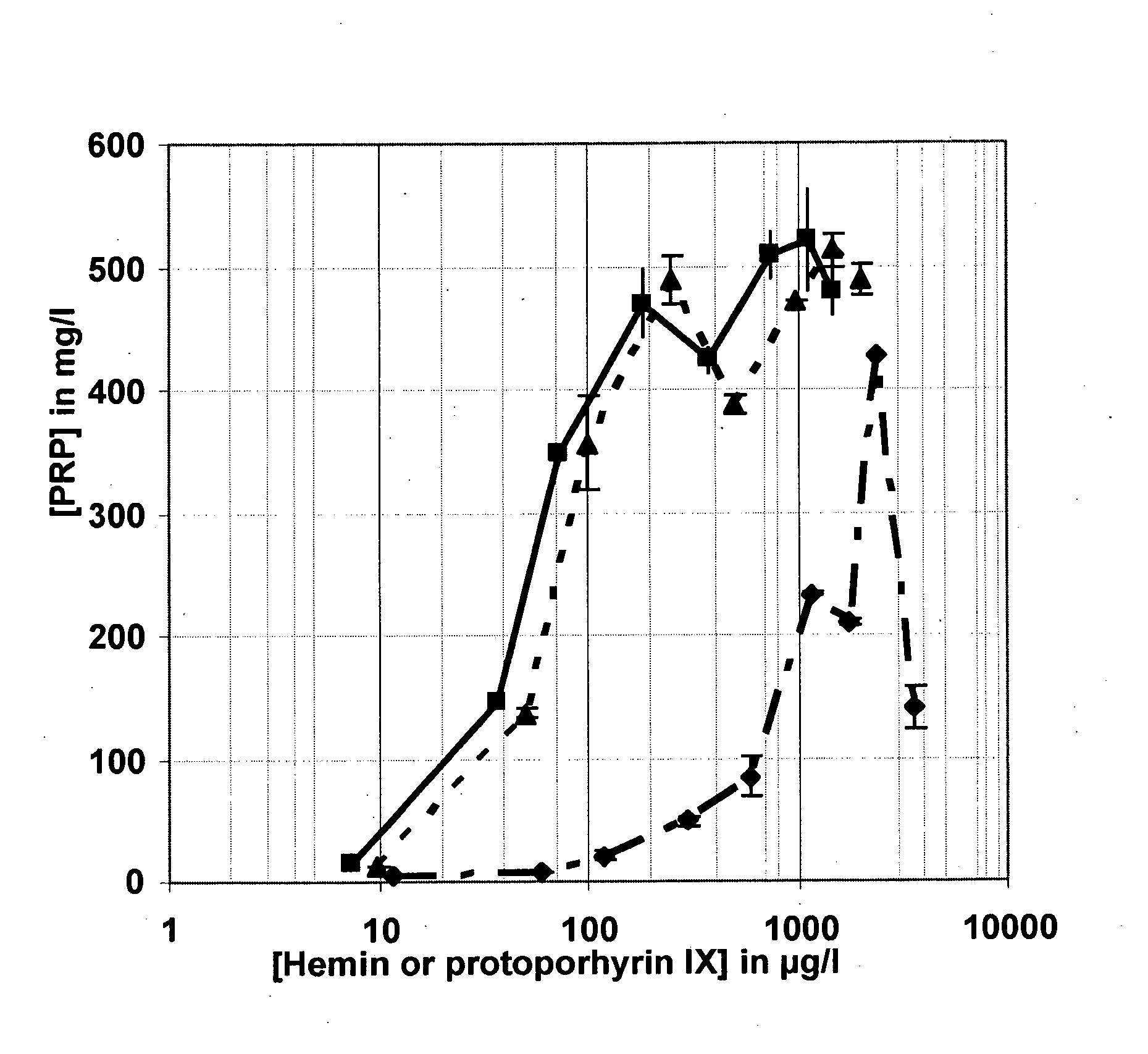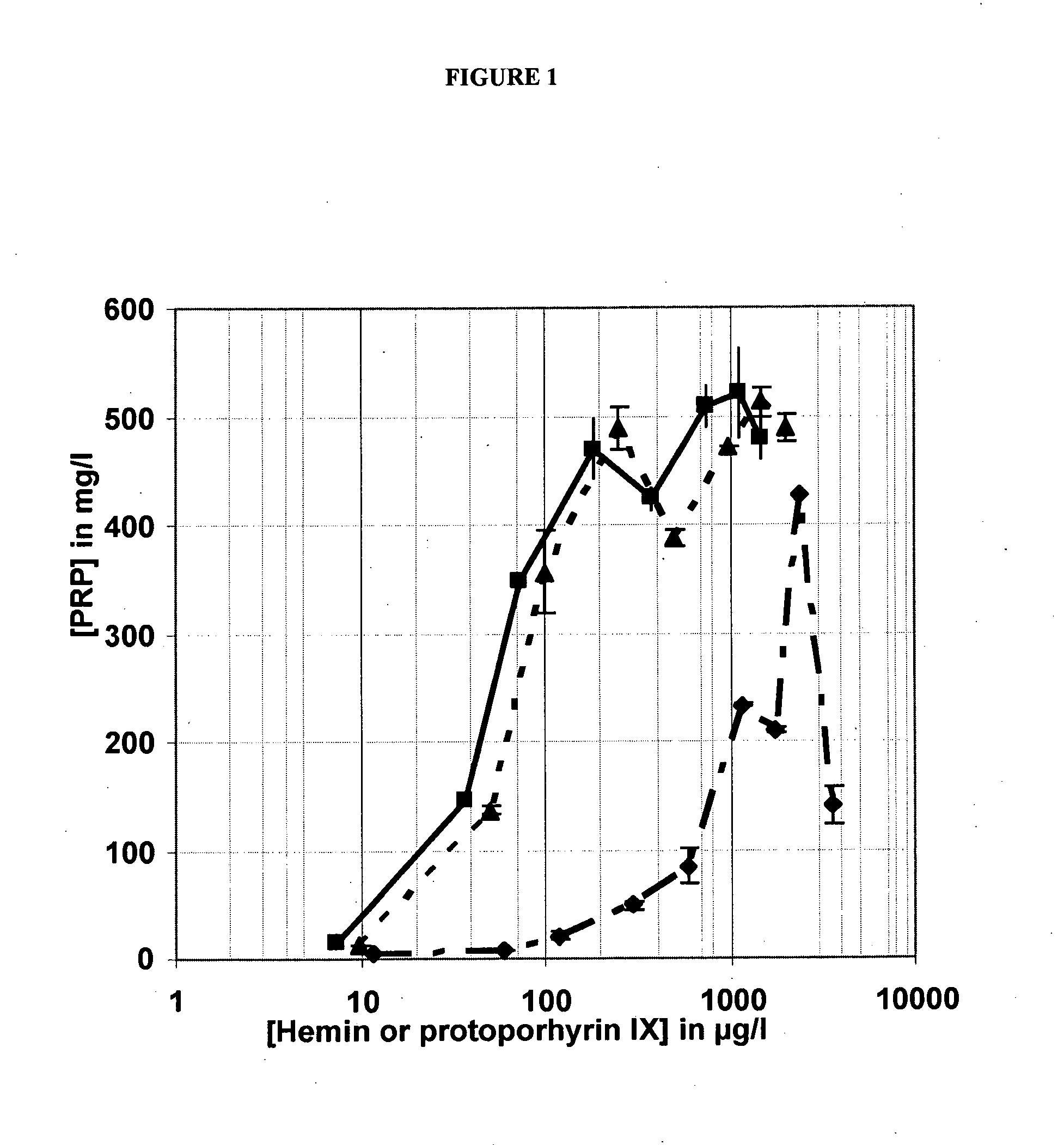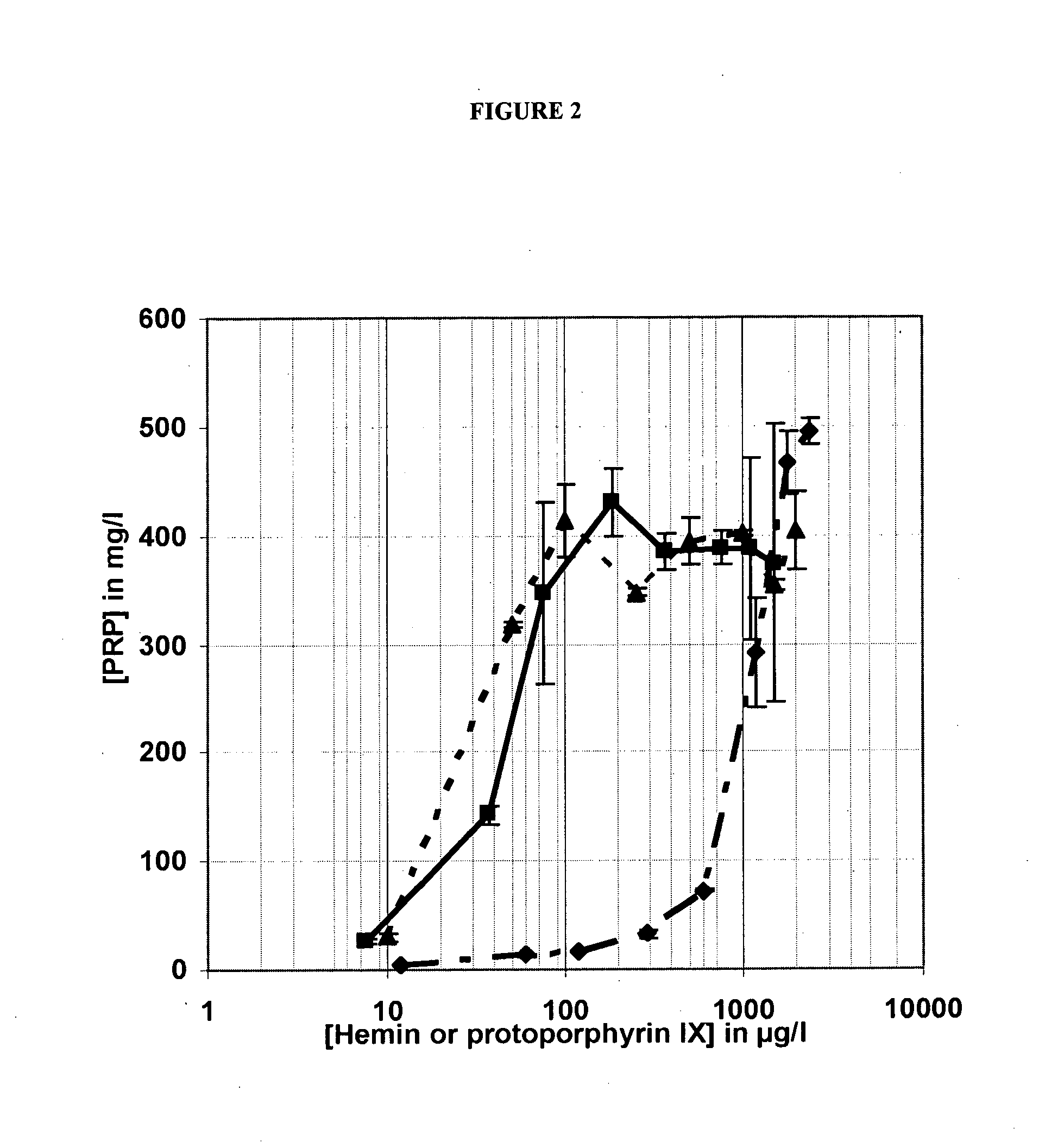Culture medium for haemophilus influenzae type b
a technology of haemophilus influenzae and culture medium, which is applied in the direction of antibacterial agents, immunological disorders, antibody medical ingredients, etc., can solve the problems of stumbling blocks in the production of prp, and achieve the effect of improving the method of producing prp
- Summary
- Abstract
- Description
- Claims
- Application Information
AI Technical Summary
Benefits of technology
Problems solved by technology
Method used
Image
Examples
example 1
Influence of Protoporphyrin IX on the Production of PRP in a Plant Peptone-based Culture Medium
[0174]1) Methodology
[0175]The production of PRP obtained after 16 hours of bacterial culture in liquid plant peptones-based culture media in which the heme source was either hemin or protoporphyrin IX of animal origin (porcine protoporphyrin) in disodium salt form, or protoporphyrin IX of purely synthetic origin in disodium salt form was compared. The hemin and protoporphyrin IX concentration ranges in the culture media varied from about 0.010 g / l to about 2 g / l so as to obtain PRP titration curves as a function of the heme source tested and as a function of the plant peptone tested. An enzymatic hydrolysate of garden pea peptone provided by Kerry (Hy pea 7404) and a wheat peptone provided by Organotechnie (19559) were tested at a concentration in the culture medium equivalent to 0.87 g / l of protein nitrogen. By reference to the current methods for the production of PRP, PRP production was...
example 2
Influence of the Composition of the Solid Medium on the Production of PRP by the Colonies
[0209]A freeze-dried material of a homogeneous population of Haemophilus influenzae serotype b bacteria containing about 108 microbes was taken up in 1 ml of Dulbecco PBS buffer (Gibco ref 14040-083). Ten-fold serial dilutions were carried out in this buffer. 50 μl of each of the dilutions: 10−5, 10−6 and 10−7, were collected and inoculated either on Petri dishes containing various selective solid media compositions according to the invention, or on a Petri dish containing a standard solid medium containing a charcoal agar (Difco, Ref 289410) supplemented with 10% (v / v) defibrinated boiled horse blood (BioMérieux, Ref 55832).
[0210]After incubating overnight at 37° C. in an incubator containing 10% CO2, the colonies were examined by transparency, under a 75 W lamp, the Petri dishes being closed. The colonies appeared opaque and uniform on the standard medium. On the other hand, white colonies and...
example 3
Influence of the Step of Culture on Selective Solid Medium on the Production of PRP in Liquid Medium
[0227]Two methods for producing PRP were compared. In the first method, the contents of a frozen material (=108 bacteria / ml) of a population of Haemophilus influenzae type b bacteria, called stock population, was directly inoculated into a liquid culture medium according to the invention. The characteristics of the stock population were analyzed beforehand (see next paragraph). In the second protocol, a daughter population was derived from the stock population using a selective solid medium according to the invention which made it possible to select a daughter population from the white colonies which contain 100% of capsulated bacteria. The daughter population was then inoculated into the same culture medium as the stock population. The production of PRP by the stock population and the daughter population were then measured and compared in a third step.
[0228]3.1) Characteristics of th...
PUM
| Property | Measurement | Unit |
|---|---|---|
| Concentration | aaaaa | aaaaa |
| Concentration | aaaaa | aaaaa |
| Concentration | aaaaa | aaaaa |
Abstract
Description
Claims
Application Information
 Login to View More
Login to View More - R&D
- Intellectual Property
- Life Sciences
- Materials
- Tech Scout
- Unparalleled Data Quality
- Higher Quality Content
- 60% Fewer Hallucinations
Browse by: Latest US Patents, China's latest patents, Technical Efficacy Thesaurus, Application Domain, Technology Topic, Popular Technical Reports.
© 2025 PatSnap. All rights reserved.Legal|Privacy policy|Modern Slavery Act Transparency Statement|Sitemap|About US| Contact US: help@patsnap.com



